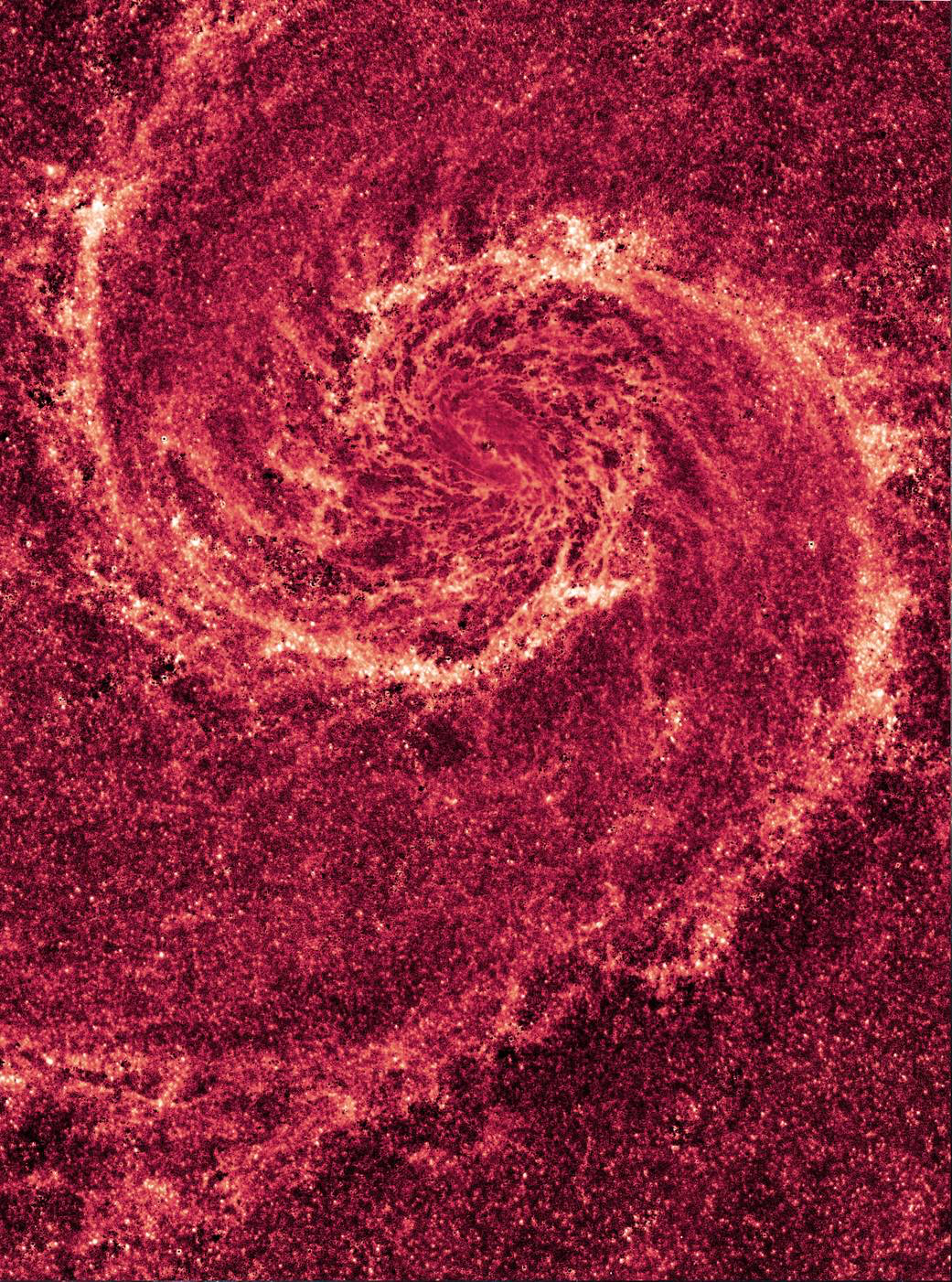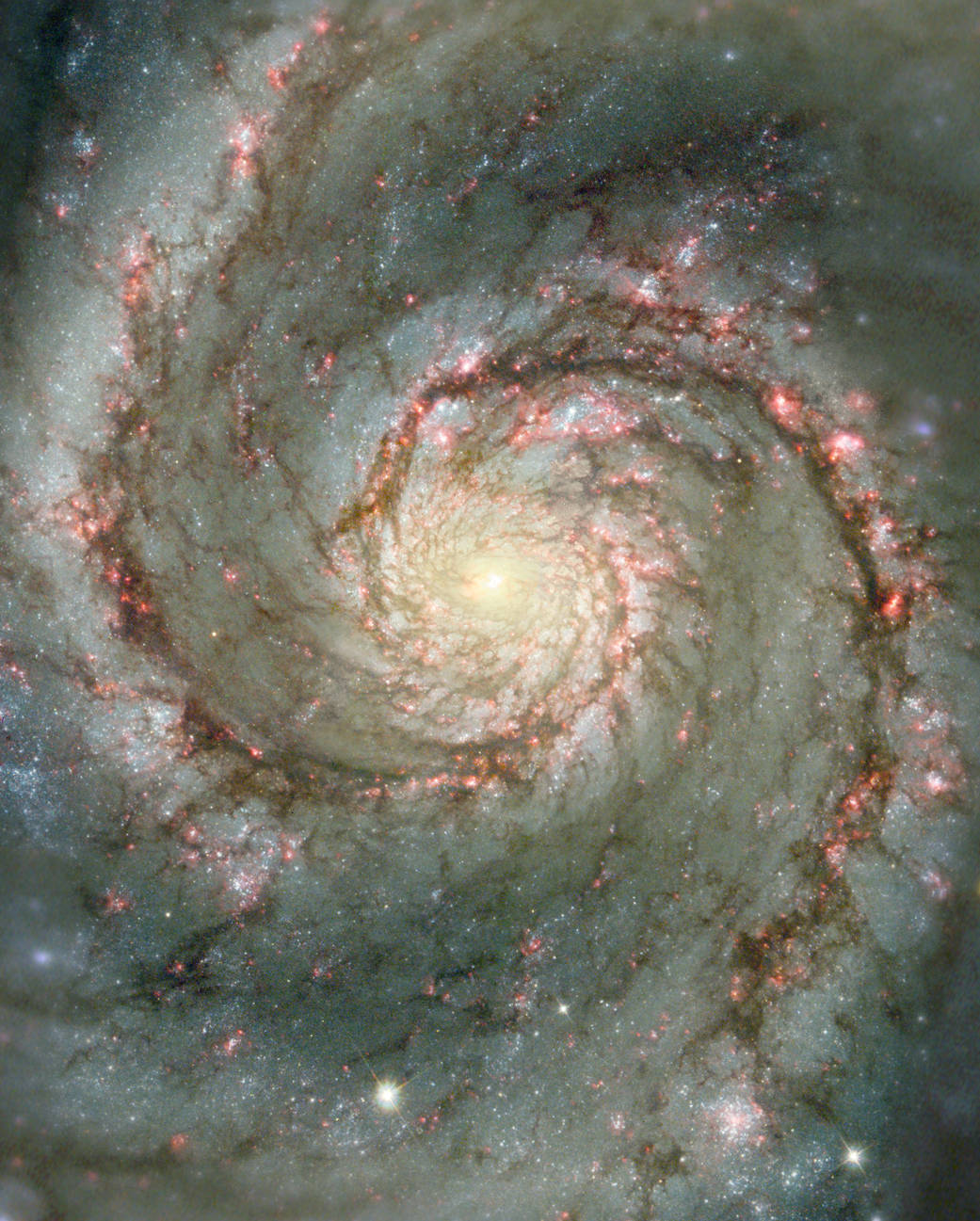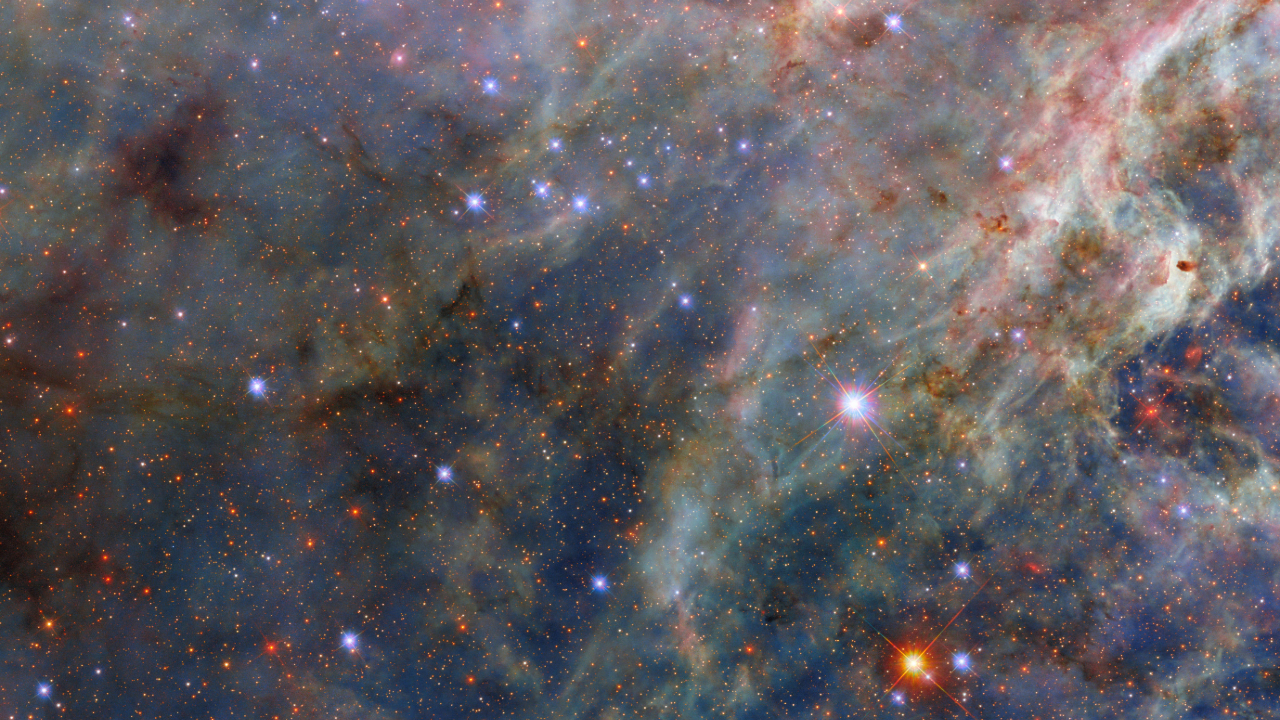Cosmic Soufflé: The Tricky Art of Spiral Galaxies

Paul Sutter is a visiting scholar at The Ohio State University's Center for Cosmology and AstroParticle Physics (CCAPP). Sutter is also host of the podcasts Ask a Spaceman and RealSpace, and the YouTube series Space in Your Face. Sutter contributed this article to Space.com's Expert Voices: Op-Ed & Insights.
I hate making soufflés. Or, to be more precise, I hate trying to make soufflés. You know, that puffy cheese-and-egg French dish? Julia Child and Alton Brown make it look so easy, but it's a real devil to cook it just so to get that stratospheric tower of deliciousness. If you bake it too quickly or at too hot a temperature, you end up with a thick lump of tasteless remorse.
So how do you cook a spiral galaxy? How do you cook any galaxy? It's pretty straightforward, really: Take a nebulous cloud of gas and dark matter in the early universe, and … wait. Given enough time, any tiny clump or seed in that cloud will attract its neighbors, making its gravitational pull even stronger, attracting more neighbors, growing stronger yet, and on and on for hundred of millions of years, as I explain in this video on how to bake a galaxy.
That's it! The recipe for a galaxy is pretty simple. All it takes is gravity doing what gravity loves to do, and some time. But to make a spiral galaxy, you have to mix things just right. The problem is that there's only so much potential star stuff (aka, blobs of gas) floating around in any galaxy. If too much stuff crams into a galaxy all at once, all the available gas gets crushed into stars in one big burst. Fast-forward 13 billion years, and you're left with a lumpy, mostly elliptical galaxy, full of red stars.
And when it comes to galaxies, red means dead. Or at least, really, really old. Elliptical galaxies did their star party just once, when they were young, burning through their inheritance in one fantastic splash. These prodigal galaxies never came back. They still have stars hanging around, but they are small suns — and hence long-lived — and mostly red. Elliptical galaxies are now nothing but giant, sleepy retirement communities.
Portions of spiral galaxies are red, too: the central bulge and the "halo," or the sprinkling of stars that live above and below and main, flat disk of the galaxy. But the spirals themselves are a bright, blazing blue, cluing astronomers in that stars there are young, and the party lives on. Even though a spiral galaxy may have formed a long time ago, triggering an intense burst of star formation, whatever's happening inside the spirals is an ongoing process, something that doesn't burn up too much or too little of a galaxy's gas reserves.
So this means the spirals appear sometime after the galaxy itself assembles, and that whatever makes the spirals keeps on making them over eons. If spirals were only temporary, once-in-a-galactic-life-time thing, astronomers would hardly see any such galaxies left today. Instead, between half and two-thirds of all galaxies feature spiral arms. It must be Julia Child's universe, because that's a lot of perfectly cooked soufflés.
Breaking space news, the latest updates on rocket launches, skywatching events and more!
If you just look at a spiral galaxy, it seems as if the arms are massive pinwheels. Blow on a galaxy (hard enough), and you just might make the galaxy spin faster. But galaxies aren't Frisbees; they're not solid objects all connected to themselves with plastic and glue. This means that the inner parts of a galaxy spin faster than the outer parts. If spiral arms were actually things attached to the center of the galaxy and spinning as fast as all the stars, the arms would've been tightly wound together like pasta on a fork a long time ago.
So if spiral arms aren't things, then what the heck are they? From looking at a spiral galaxy, it seems as if all the stars are bound up in the central bulge and in the arms, with vast tracts of wasteland everywhere else. But deeper observations reveal what the human eyeball can't: The disks of spiral galaxies are filled with stars. Positively infested! The arms themselves aren't all that much denser than the seemingly empty gaps.
The fact that spiral arms are only slightly more dense — but not crazily so — than the rest of the disk is a clue. The best picture astronomers have, so far, is that the spiral arms are actually — get this — density waves. Ripples in the galactic pond.
"Wait, wait, wait," you may say, "I'm a person of the world. I've seen ponds, buddy. They have ripples, but those ripples are most certainly not spirals."
Well, take the ripples in the pond and freeze them for just a moment. They usually look like a bunch of concentric circles, with smaller ones inside larger ones. Imagine stretching them out so the ripples are ellipses rather than circles. OK so far? Good. Now make the ellipses spin, with the little ellipses in the center spinning faster than the big ones at the edge. Before you ask why — we're building a model of a galaxy, and galaxies aren't exactly circular.
Think about it long enough and squint your eyes, and you'll see that there are places where the long side of one ellipse runs into the short side of another. All this bunching-up forms a pattern. It forms a, wait for it, spiral!
So that's the supposed origin of the spiral in a galaxy. Not ripples in a pond — we're done with that analogy — but density waves, places where the stars and gas are naturally denser than their surroundings. The waves come from a variety of sources, either tiny disturbances ("tiny" here means something like a supernova) amplified to galactic proportions or leftover wiggles from interactions with smaller galaxies.
The bunched-up, spinning, Matryoshka-doll density waves explain why there are spiral features in the first place, but that model doesn't explain what makes the arms so striking. Sure, the arms may be slightly denser than what surrounds them, but not nearly as much as you would guess from looking at the galaxy. [How Galaxies are Classified by Type (Infographic )]
That brings us to part 2: Extra stars make the spiral arms, and in return, the spiral arms make extra stars.
The spiral arms are the drivers going half the speed limit in the highways of the galaxy. Fast-moving cars catch up to the slow-poke, get caught up with all the other cars trying to make their way around, honk their horns a lot, then floor it once they pass. Meanwhile the high-density disturbance plods its way down the road, oblivious and annoying. (Watch "Spiral Arms, the Galactic Traffic Jams.")
The spiral arms are indeed rotating, after all, but at a different speed than the stars and gas. A cloud of gas catches up to the spiral arm, compresses because of the slightly higher density, and pops out as a star on the other end. In the galactic outskirts, the stars and gas sometimes are moving even slower than the density wave, but the process still happens when the spiral catches up to them. This is what powers the ongoing star formation in spiral galaxies: The arms themselves are star-making factories.
Inside the arms, all sorts of stars are made: big ones, medium ones, little ones. The medium and petite stars live nice, long, stable lives, and after their violent youth in the spiral arm, they move out into a comfortable retirement in the gaps. The large stars, burning a bright blue, never leave, coming to the end of their short lives before ever making it out of the arms of their birth.
Now, finally, all the pieces of the puzzle have clicked into place. The spiral arms are an illusion. Well, almost an illusion. They're definitely denser than the rest of the galaxy, but not by much. However, the stars that live in the arms are uncharacteristically blue and bright, while the longer-lived stars in the gaps are redder and dimmer, giving humans' ignorant eyes, observing visible wavelengths, the impression of giant pinwheels in the sky.
The same goes for other wavelengths: Ultraviolet picks out the active young stars, and infrared highlights star-forming dust clouds, which all live primarily in the arms.
It’s only by taking long-exposure images that we can see that the gaps between the spirals are not empty space. Sure, you see the spirals, but you should also notice everywhere else: Look at all the stuff!
Learn more by listening to the episode "How Do Spiral Galaxies Form?" on the Ask a Spaceman podcast, available on iTunes and on the Web at http://www.askaspaceman.com. Thanks to Jayeeta Sarkar for the question that led to this episode! Ask your own question on Twitter using #AskASpaceman or by following Paul @PaulMattSutter and at facebook.com/PaulMattSutter.
Follow all of the Expert Voices issues and debates — and become part of the discussion — on Facebook, Twitter and Google+. The views expressed are those of the author and do not necessarily reflect the views of the publisher. This version of the article was originally published on Space.com.

Paul M. Sutter is a cosmologist at Johns Hopkins University, host of Ask a Spaceman, and author of How to Die in Space.


